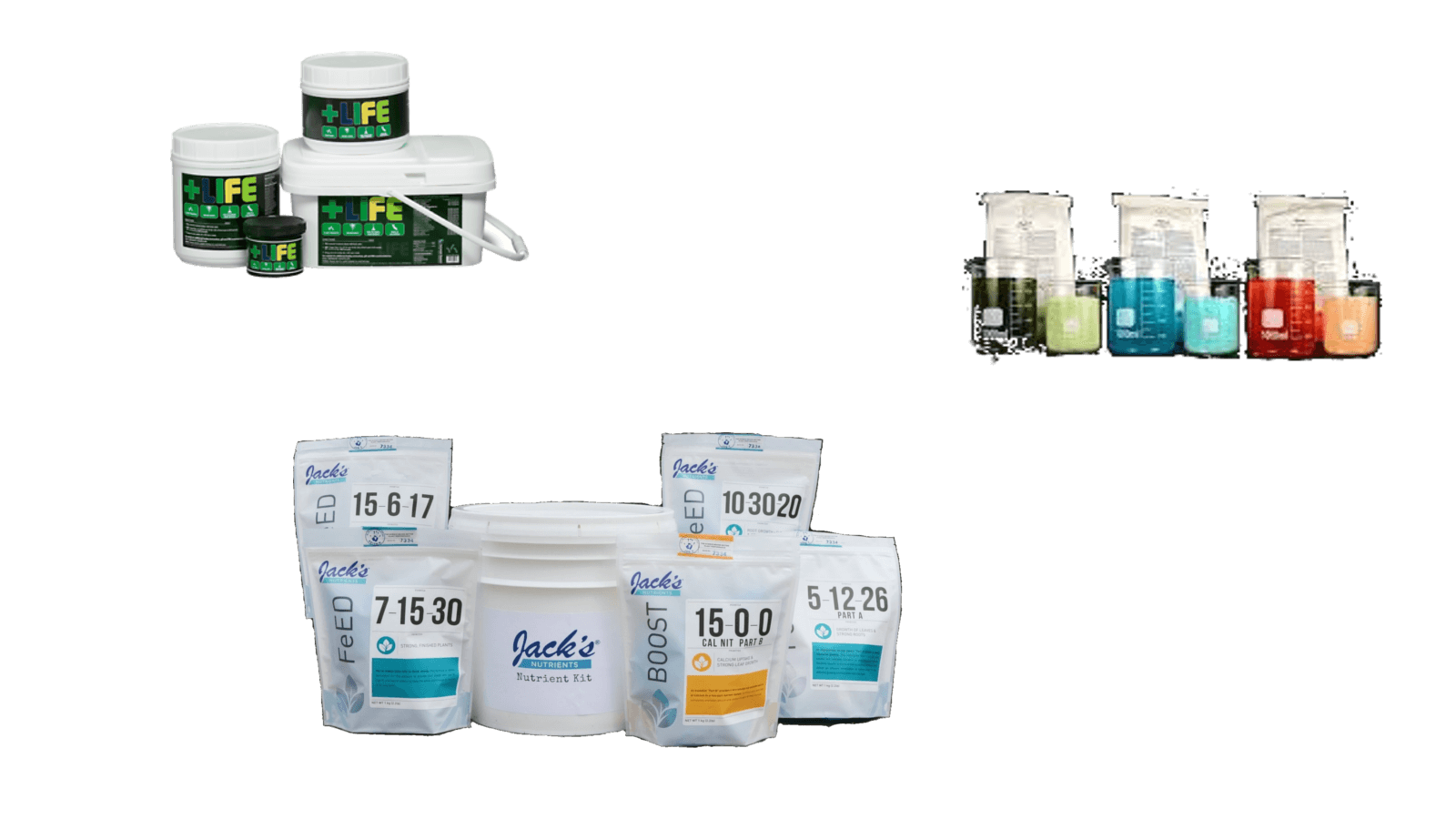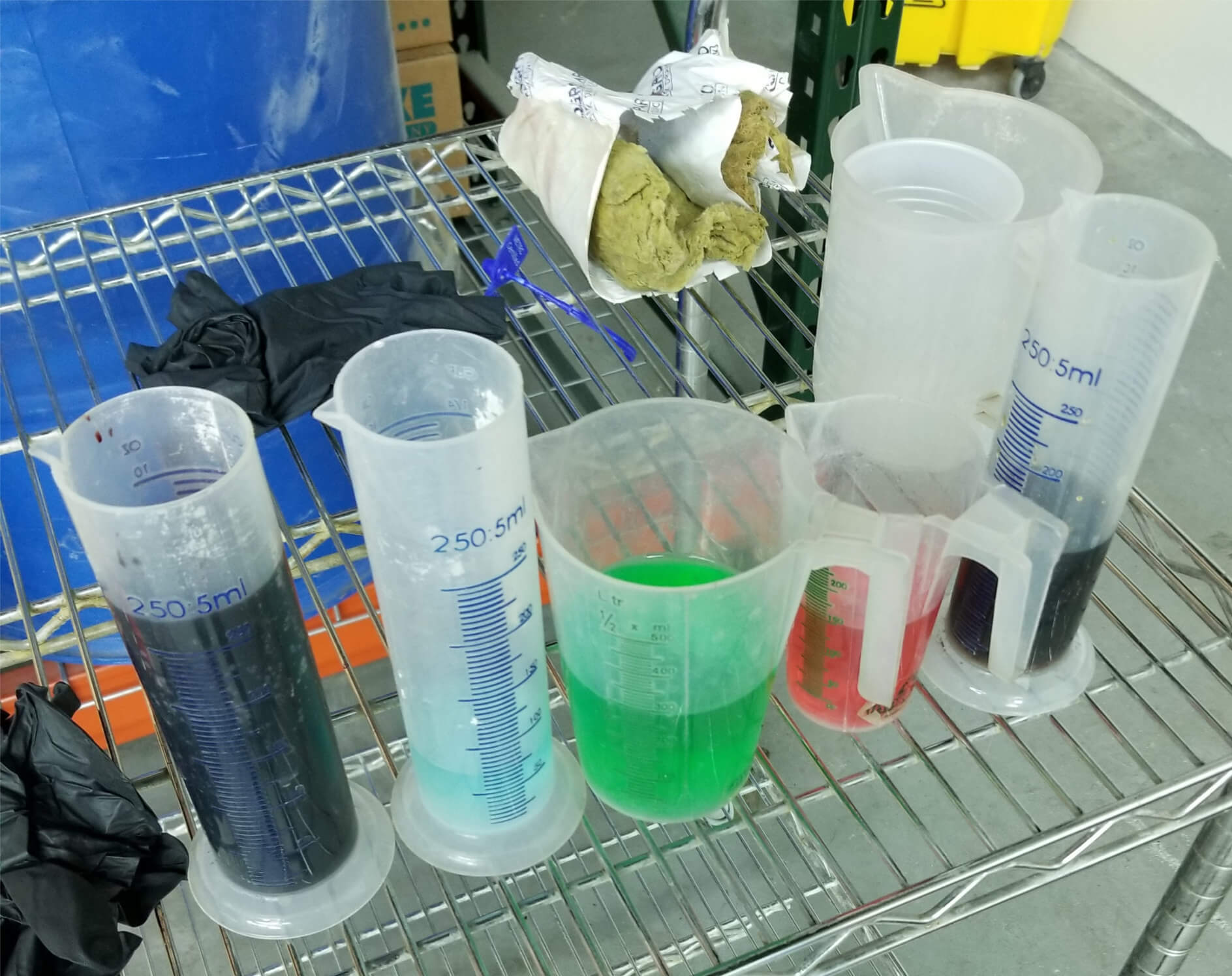UPDATED: July 27, 2020
FORMERLY: Granular & Liquid Fertilizers
- Granular Fertilizers
- Liquid Fertilizers
- Factors To Consider
When considering how to grow your cannabis a couple of the questions are what sorts of nutrients to use and how to apply them. Before considering what nutrient line to use or which assortment of nutrient products you should use, you should consider the practicalness of granular and liquid fertilizers depending on several factors including: cost, equipment, methods of application, and ethics. Broadly speaking, there are two main categories of fertilizers: granular and liquid (Isleib, 2016). Both granular and liquid fertilizers have their own advantages depending on the several factors listed above and can be used in unison throughout the grow cycle.

Granular Fertilizers
Granular fertilizers typically consist of small particles and can be separate or mixed into blends. These sorts of fertilizers are mixed into water then applied to the growing medium throughout a plant’s life cycle much like liquid fertilizers. Liquid fertilizers have been extremely popular among both residential and commercial cannabis grows, but over the past several years granular fertilizers have been gaining in popularity because of their own advantages. The biggest advantage of granular fertilizers over liquid fertilizers is cost. In most instances, granular fertilizers will be cheaper than their liquid counterparts. Examples of granular fertilizers that are popular with cannabis growers include brands such as Veg+Bloom, Front Row AG, and Jack’s Nutrients.

Liquid Fertilizers
The biggest advantage of liquid fertilizers is the ability to easily apply it as a foliar to get an array of benefits from a mixed product that can target deficiencies. Foliar applications can allow for nutrients to be more readily absorbed than ground application through the leaves of the cannabis plants. It is important to note that the availability of the nutrients when applied this way is much shorter than ground application. This is why foliar applications are a great method to correct nutrient deficiencies in the short-term or to provide an additional nutrient boost rather than as part of a regular nutrient schedule (UF, 2013). Some examples of popular liquid fertilizers that can be applied as part of a nutrient schedule and as a foliar application include brands such as Kimtec, Cyco, Heavy 16, and General Hydroponics. In general, liquid fertilizers are applied much like granular fertilizers in that they are mixed in water and applied throughout a plant’s life cycle. Liquid fertilizers are easier to learn and use while granular fertilizers can be difficult to use, but cheaper over time in large quantities.
Factors To Consider
Overall, there are several additional factors to consider when choosing between liquid and granular fertilizers such as nutrient mobility, salt content, blending, cost, storage, and application methods. All of these factors are also going to be dependent on what sort of environment you are growing in, what medium you are growing in, and cost.
-
Salt Content: since liquid fertilizers are heavily diluted with water, they are easier to mix and feed plants without burning them with excessively high salt content.
-
Blending: granular fertilizers are more difficult to blend than liquid fertilizers. Cost: granular fertilizers can be cheaper to operate on than liquid fertilizers using cost-per-gallon feed calculations.
-
Storage: granular fertilizers are easier to store, they do not settle out over time or salt out in cold weather.
-
Application: even though liquid fertilizers can be applied through a foliar application and granular fertilizers are generally more concentrated, granular fertilizers are much cheaper and are just as effective as liquid fertilizers.
Conclusion
There is no one-size-fits-all for providing nutrients to your plants. Many cannabis growers use a combination of both types of fertilizers throughout the life cycle of the plant in order to maximize the plant’s potential. Granular fertilizers are cheap and effective if used properly and liquid fertilizers can be easier to learn and harder to lockout plants as liquid fertilizers are less concentrated than granular fertilizers. According to the Michigan State University website, one type of nutrients is not recommended over the other. Instead farmers should analyze each scenario separately considering costs, application, and ease of use when making fertilizer decisions.
Resources
-
Isleib, Jim. (2016). “Pros and cons of granular and liquid fertilizers”. Michigan State University Extension. Retrieved from https://www.canr.msu.edu/news/pros_and_cons_of_granular_and_liquid_fertilizers.
-
UF (2013). “Types of Fertilizer”. University of Florida - Institute of Food & Agricultural Sciences. Retrieved from http://gardeningsolutions.ifas.ufl.edu/care/fertilizer/types-of-fertilizer.html.
Comments powered by Talkyard.